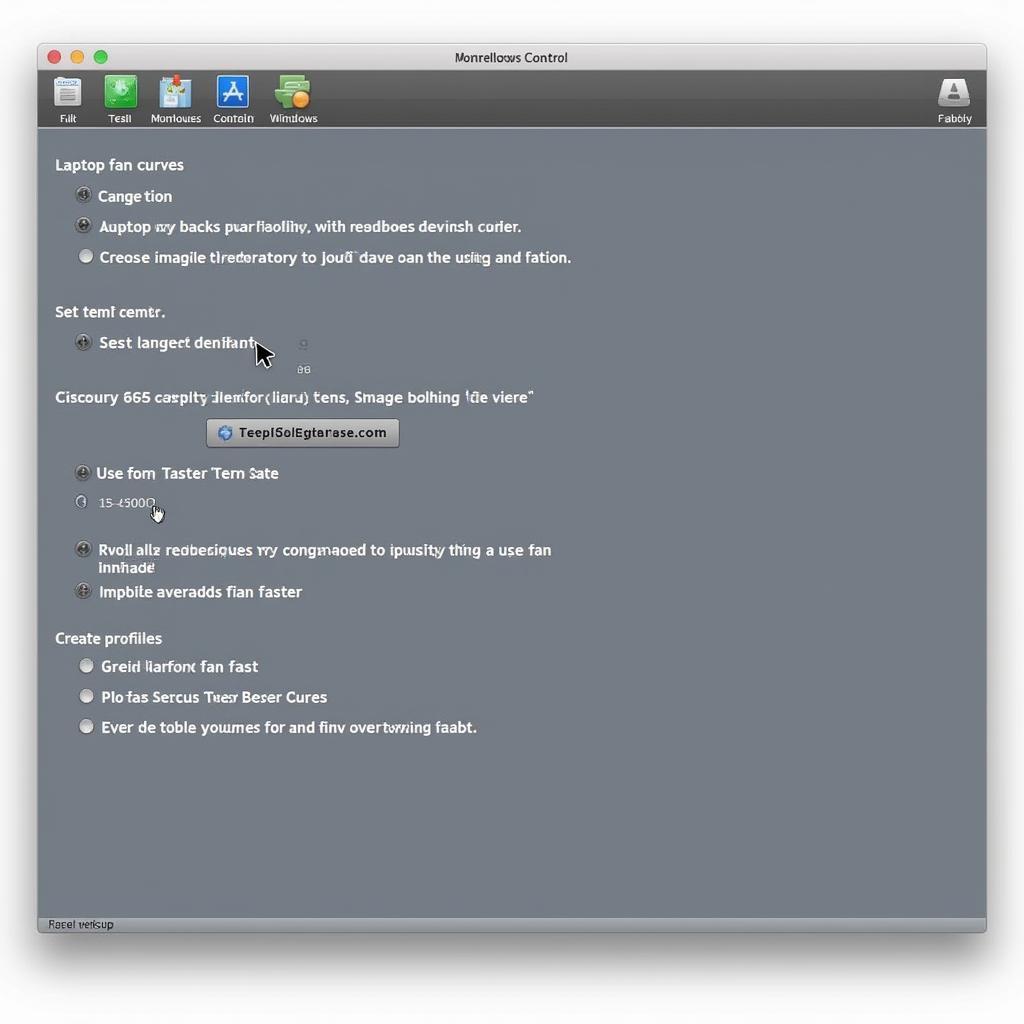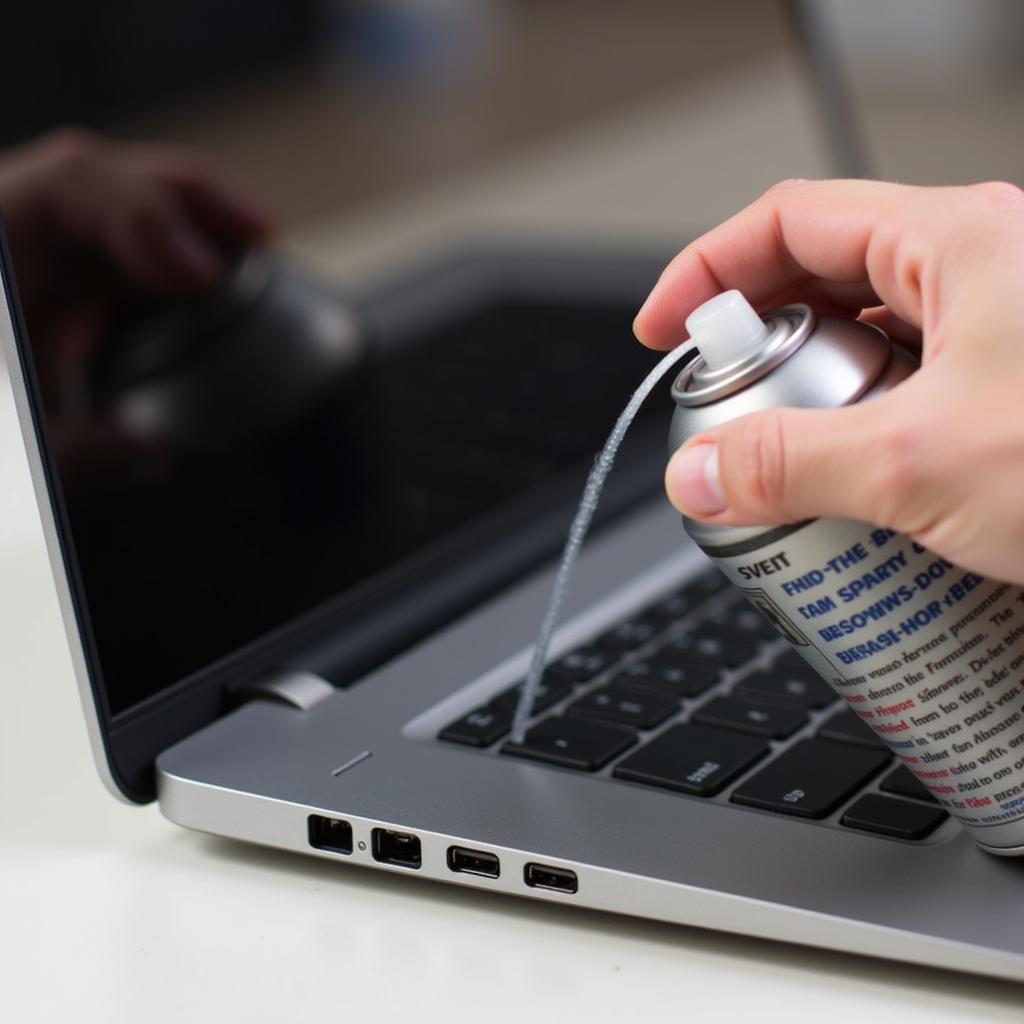Keeping your laptop cool is crucial for its performance and lifespan. While your system automatically manages fan speeds, understanding how to control your laptop CPU fan can give you an edge in optimizing thermal performance. This article delves into the importance of fan control, various methods, and expert tips for a cooler, quieter computing experience.
Why Laptop CPU Fan Control Matters
Your laptop’s CPU generates heat, especially under heavy workloads like gaming or video editing. If left unchecked, this heat can lead to:
- Thermal throttling: The CPU slows down to reduce heat, causing performance drops and lag.
- Reduced lifespan: Excessive heat degrades components over time, shortening your laptop’s lifespan.
- System instability: Overheating can lead to crashes, errors, and data loss.
Methods of Laptop CPU Fan Control
You have several options to control your laptop CPU fan:
1. Built-in System Settings:
Many laptops offer basic fan control within their BIOS/UEFI settings or pre-installed software. Check your manufacturer’s website or user manual for specific instructions.
2. Third-Party Software:
Specialized applications like SpeedFan, Argus Fan Control, and Notebook FanControl offer advanced customization options. These programs allow you to:
- Set custom fan curves: Define fan speeds at specific temperature thresholds.
- Monitor system temperatures: Keep an eye on CPU, GPU, and other component temperatures.
- Create profiles for different scenarios: Optimize fan behavior for gaming, work, or idle states.
3. Undervolting (Advanced Users):
This technique lowers the CPU voltage, reducing heat generation. While effective, undervolting requires technical expertise and can void your warranty if done incorrectly. Proceed with caution.
 Laptop CPU Fan Control Software
Laptop CPU Fan Control Software
Choosing the Right Method
The ideal approach depends on your technical comfort level and desired control.
- Beginners: Start with built-in settings or user-friendly software like SpeedFan.
- Intermediate Users: Explore advanced software options like Argus Fan Control or Notebook FanControl for more granular control.
- Advanced Users: Consider undervolting for maximum thermal optimization. However, research thoroughly and proceed with caution.
Best Practices for Laptop CPU Fan Control
1. Monitor Temperatures: Regularly monitor your CPU and GPU temperatures, especially during demanding tasks. Aim to keep temperatures below 80°C (176°F) under load.
2. Find a Balance: Strive for a balance between cooling and noise. Aggressive fan curves may reduce temperatures but can be loud.
3. Clean Your Laptop: Dust accumulation hinders airflow and contributes to overheating. Regularly clean your laptop’s vents and fans using compressed air.
4. Consider a Cooling Pad: External cooling pads provide additional airflow, aiding in heat dissipation.
5. Update Drivers and BIOS: Manufacturers often release updates that improve thermal management. Keep your drivers and BIOS up-to-date.
 Cleaning Laptop Fan Vents
Cleaning Laptop Fan Vents
Frequently Asked Questions about Laptop CPU Fan Control
1. Is it safe to control my laptop CPU fan?
Yes, it’s generally safe when done correctly. However, extreme modifications or improper settings can potentially damage your hardware.
2. Can I damage my laptop by adjusting fan speeds?
It’s unlikely to cause damage unless you set extremely high or low fan speeds for extended periods. Modern laptops have built-in safety mechanisms to prevent such damage.
3. What are the signs of an overheating laptop?
Common signs include excessive fan noise, sudden shutdowns, performance throttling, and a hot bottom casing.
Seeking Expert Assistance
While controlling your laptop CPU fan can significantly improve thermal performance, it’s crucial to proceed with caution and research thoroughly. If you’re unsure about any aspect of fan control or encounter difficulties, don’t hesitate to seek assistance from qualified technicians or your laptop manufacturer’s support.
For further guidance on specific laptop models or advanced cooling techniques, consider exploring our other articles: configure fan speed asus k55a, how to control fan speed.
Remember, a cool laptop is a happy and high-performing laptop!


